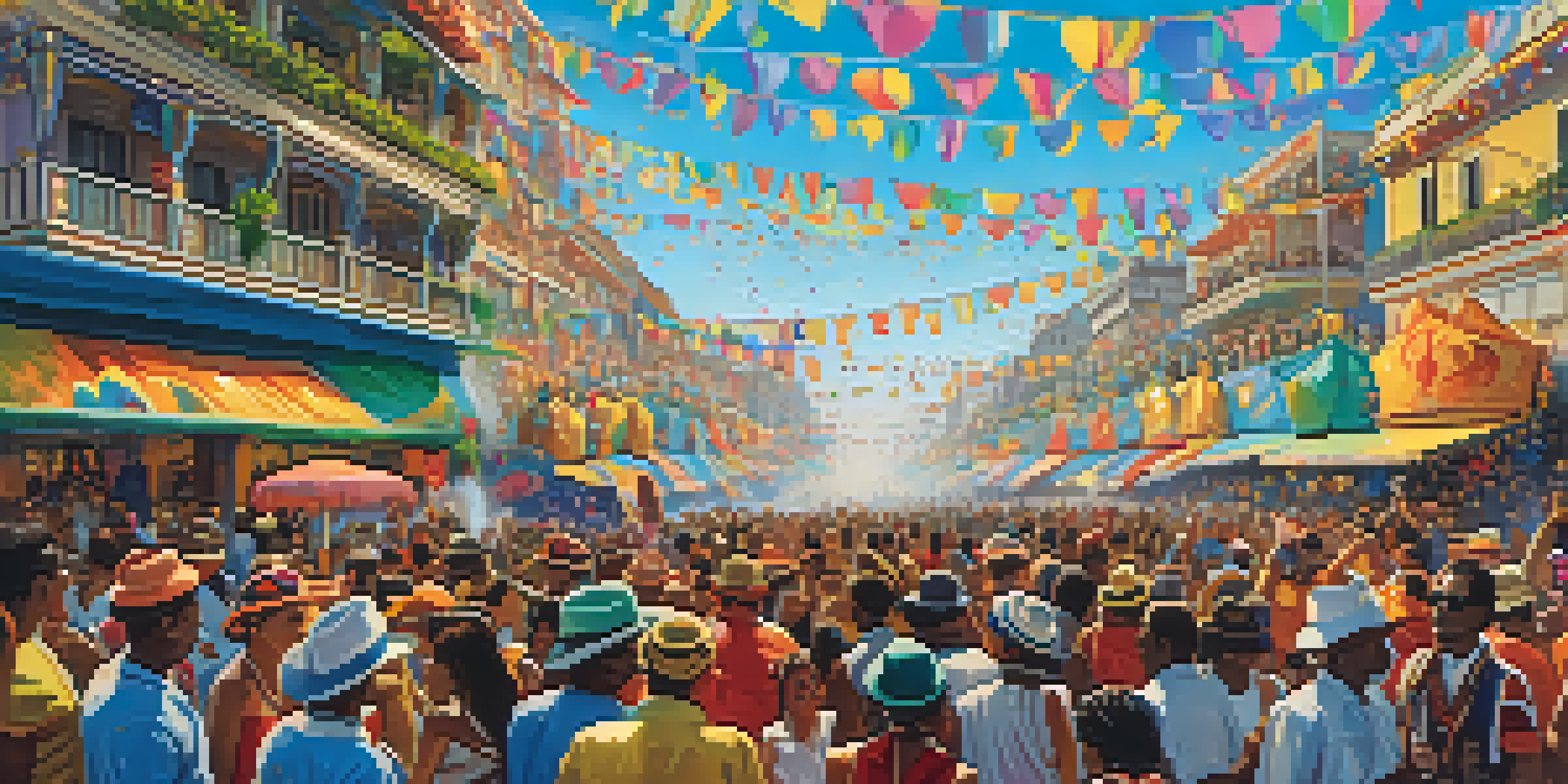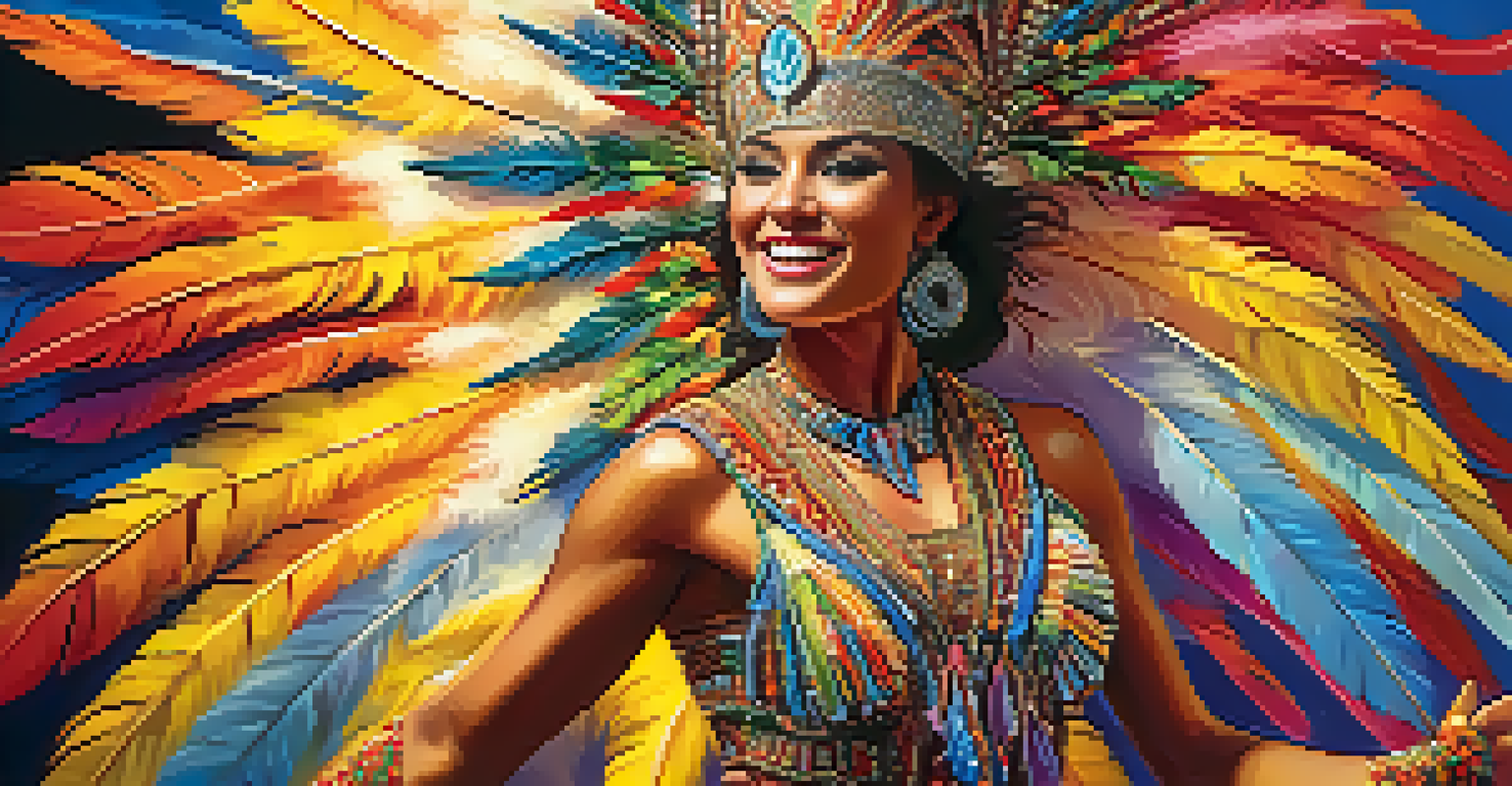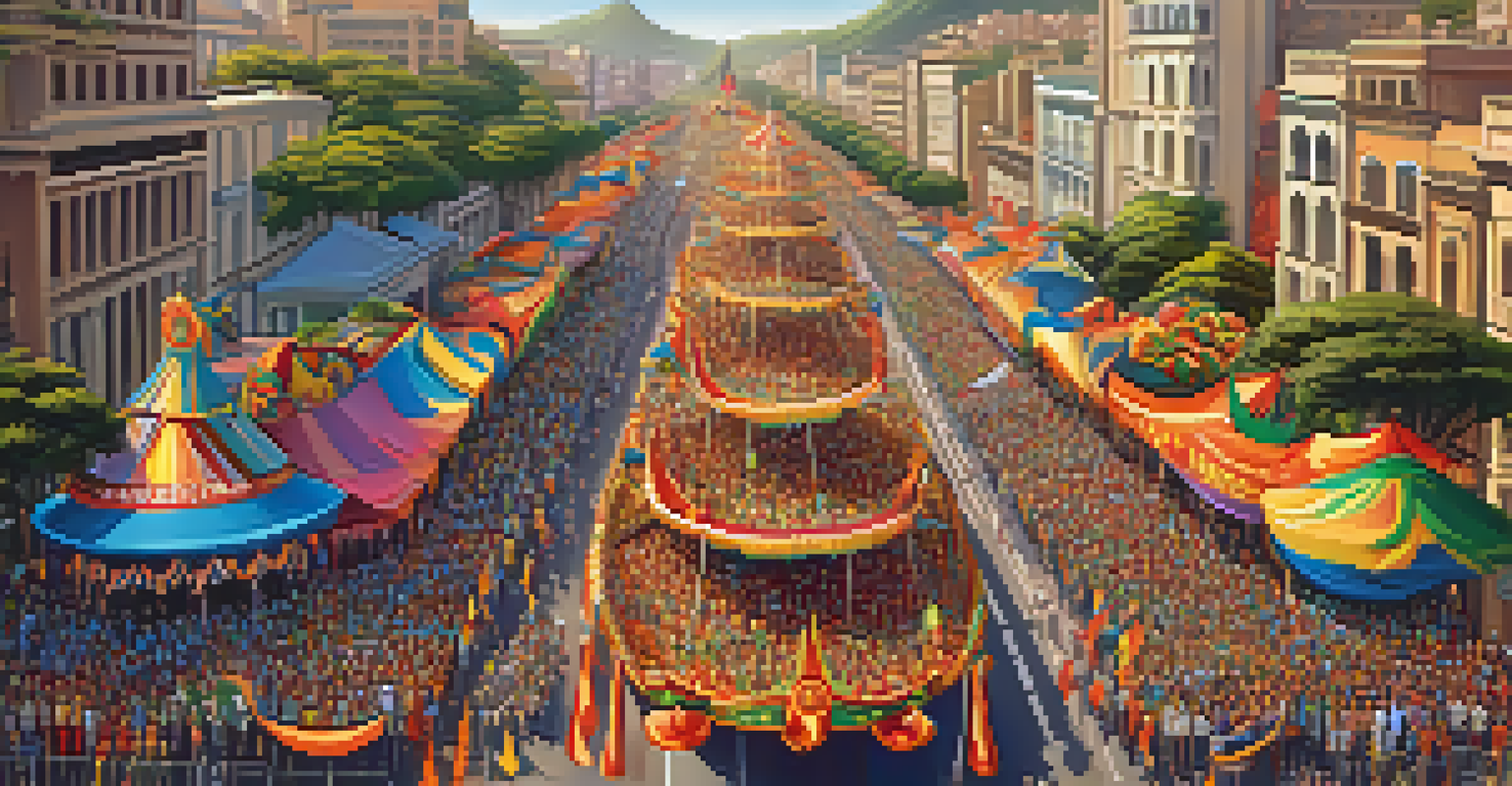Cultural Insights from the Rio Carnival in Brazil

The Historical Roots of Rio Carnival
Rio Carnival has deep historical roots, tracing back to the 18th century. Originally a festival to celebrate the arrival of Lent, it evolved into the grand celebration we know today. This transformation reflects Brazil's rich tapestry of cultural influences, from African traditions to European customs.
Carnival is not just a party; it is a cultural statement that carries centuries of tradition.
As you stroll through the streets during Carnival, you can feel the echoes of history in the vibrant music and colorful costumes. Each samba school carries its own legacy, often telling stories that highlight social issues, folklore, or Brazilian history. This connection to the past makes the event not just a party but a cultural statement.
Understanding these historical roots enriches the Carnival experience. It’s a reminder that every drumbeat and dance step carries centuries of tradition, inviting attendees to appreciate the layers of meaning behind the festivities.
The Role of Samba in Carnival Culture
Samba is the heartbeat of Rio Carnival, a genre that embodies the spirit of Brazil. Originating from African rhythms, samba has evolved into various styles, each with its own flair and flavor. During Carnival, samba schools compete in parades, showcasing elaborate floats and costumes that tell captivating stories.

The passion of samba dancers is infectious, drawing spectators into the rhythm of the celebration. Each performance is a blend of choreography, music, and cultural expression, creating a vibrant tapestry that reflects the diversity of Brazilian society. The energy is palpable, making it impossible to resist joining in the fun.
Carnival's Cultural Significance
Rio Carnival is not just a celebration but a rich cultural tapestry that reflects Brazil's diverse historical influences.
Moreover, samba serves as a unifying force among diverse communities, transcending barriers of language and background. This sense of togetherness is one of the most beautiful aspects of Carnival, reminding us of the power of art to bring people together.
Artistic Expression Through Costumes and Floats
One of the most visually stunning aspects of Rio Carnival is the extravagant costumes and floats. Each samba school invests months of preparation, designing colorful costumes that often weigh several kilograms. These outfits are not just clothing; they are works of art that represent the school's theme and creativity.
Art can be a catalyst for social change, bringing attention to issues that matter.
The floats, often towering and intricately designed, serve as moving canvases, telling stories and showcasing Brazilian culture. From historical figures to contemporary issues, these floats capture the imagination of thousands, immersing them in a visual spectacle. It's a testament to the creativity and craftsmanship of Brazilian artists.
Witnessing these artistic expressions in person is an unforgettable experience. The vibrant colors, intricate details, and sheer scale of the floats and costumes play a significant role in the Carnival's allure, captivating both participants and spectators alike.
The Influence of African Culture at Carnival
African culture profoundly influences the Rio Carnival, shaping its rhythms, dance, and overall spirit. The contributions of African slaves, who brought their traditions and music to Brazil, are evident in the samba rhythms that pulse through the celebration. This cultural heritage is celebrated and honored during the festivities.
Many samba schools incorporate elements of African folklore, spirituality, and mythology into their performances. This not only pays homage to the roots of samba but also highlights the ongoing impact of African culture in Brazilian society. The blending of these traditions creates a rich, dynamic experience for everyone involved.
Samba as a Unifying Force
Samba serves as the heartbeat of Carnival, uniting diverse communities through its infectious rhythms and dance.
By embracing and celebrating African influences, Rio Carnival becomes a powerful statement about identity and resilience. It serves as a reminder of the importance of cultural heritage and the ways in which it continues to shape contemporary society.
Carnival as a Platform for Social Commentary
Beyond the music and festivities, Rio Carnival serves as a platform for social commentary. Many samba schools use their parades to address pressing social issues, such as inequality, discrimination, and environmental concerns. This intersection of art and activism gives voice to the struggles and aspirations of marginalized communities.
Through vibrant performances, samba schools confront societal challenges and inspire change. The themes presented in their parades often resonate with the audience, prompting discussions that go beyond the festivities. This ability to engage and provoke thought is what makes Carnival more than just a party.
Ultimately, Carnival becomes a mirror reflecting the realities of Brazilian society while also celebrating its resilience and creativity. It's a powerful reminder that art can be a catalyst for social change, bringing attention to issues that matter.
The Global Appeal of Rio Carnival
Rio Carnival has transcended borders, attracting visitors from around the world. People flock to Brazil to witness the spectacle, eager to experience the vibrant culture firsthand. This global interest highlights the event's significance as a symbol of joy, unity, and cultural richness.
Tourists often find themselves swept up in the festivities, participating in street parties and samba dances. The inclusive nature of Carnival welcomes everyone, regardless of background, creating a shared experience that fosters connections among people from diverse cultures. It's a true celebration of humanity.
Art and Activism in Carnival
Rio Carnival acts as a platform for social commentary, using vibrant performances to address pressing societal issues.
As Rio Carnival continues to grow in popularity, it showcases the beauty of cultural exchange. This global appeal not only benefits Brazil's tourism but also encourages appreciation for the country’s rich heritage, reinforcing the importance of cultural celebrations in our interconnected world.
The Future of Rio Carnival
As we look to the future, the Rio Carnival faces both challenges and opportunities. Issues such as sustainability, cultural preservation, and social inequalities pose significant hurdles. However, there is a growing awareness and commitment among participants and organizers to address these concerns.
Innovative practices are emerging, with samba schools prioritizing sustainable materials and inclusive practices. This evolution reflects a broader global movement towards responsible celebrations that honor cultural heritage while being mindful of their impact on the environment and society.

The future of Rio Carnival is bright, with the potential to adapt and evolve while staying true to its roots. Embracing change and fostering inclusivity will ensure that this extraordinary celebration continues to thrive for generations to come.